The Fourth Turning Crisis Outcomes, Will Presidential Election 2012 Be As Critical As 1860?
Politics / US Politics Dec 06, 2010 - 02:40 AM GMTBy: James_Quinn
 "We are not enemies, but friends. We must not be enemies. Though passion may have strained, it must not break our bonds of affection. The mystic chords of memory will swell when again touched, as surely they will be, by the better angels of our nature." - Abraham Lincoln
"We are not enemies, but friends. We must not be enemies. Though passion may have strained, it must not break our bonds of affection. The mystic chords of memory will swell when again touched, as surely they will be, by the better angels of our nature." - Abraham Lincoln
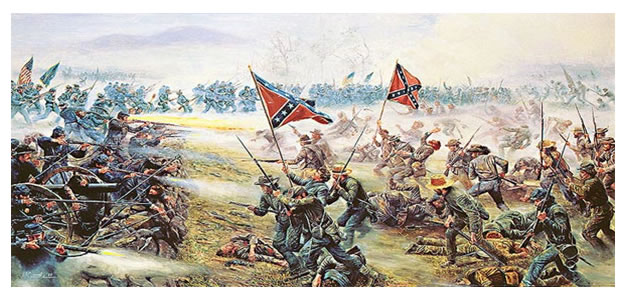
We are approximately five years into The Fourth Turning Crisis. Every previous Fourth Turning had an economic dimension that eventually led to a do or die all out war. The mainstream linear thinkers see a recovery and a return to their concept of normality. They will be shocked and flabbergasted when they realize that this is only the beginning of a 20 year period of turmoil, chaos and war. It seems that some study of history would benefit the mainstream talking media heads pretending to know what is happening and political hacks in Washington D.C. who pretend to administer the affairs of state. The cycles of history are not identical, but the alignment of generations is always the same. The cycles are consistent because a long human life is always between 80 and 100 years. The previous Fourth Turnings in U.S. history were the American Revolution, the Civil War and the Great Depression/World War II. The descriptions are as follows:
American Revolution (Fourth Turning, 1773-1794) began when Parliament’s response to the Boston Tea Party ignited a colonial tinderbox—leading directly to the first Continental Congress, the battle of Concord, and the Declaration of Independence. The war climaxed with the colonial triumph at Yorktown (in 1781). Seven years later, the new “states” ratified a nation-forging Constitution. The crisis mood eased once President Washington weathered the Jacobins, put down the Whiskey Rebels, and settled on a final treaty with England.
The Civil War (Fourth Turning, 1860-1865) began with a presidential election that many southerners interpreted as an invitation to secede. The attack on Fort Sumter triggered the most violent conflict ever fought on New World soil. The war reached its climax in the Emancipation Proclamation and Battle of Gettysburg (in 1863). Two years later, the Confederacy was beaten into bloody submission and Lincoln was assassinated--a grim end to a crusade many had hoped would "trample out the vintage where the grapes of wrath are stored."
The Great Depression & World War II (Fourth Turning, 1929-1946) began suddenly with the Black Tuesday stock-market crash. After a three-year economic free fall, the Great Depression triggered the New Deal revolution, a vast expansion of government, and hopes for a renewal of national community. After Pearl Harbor, America planned, mobilized, and produced for war on a scale that made possible the massive D-Day invasion (in 1944). Two years later, the crisis mood eased with America’s surprisingly trouble-free demobilization.
There is a consistent tempo to all Fourth Turnings. An event or series of events leads to the initial Crisis. As the Fourth Turning progresses it becomes more intense, chaotic, dire and bloody. It eventually exhausts itself as a victor is left in control of the battlefield. Picture George Washington at Yorktown, Ulysses S. Grant at Appomattox, and Douglass McArthur on the Battleship Missouri. The events during a Fourth Turning will always be different. The consistent aspect of all Fourth Turnings is the mood of the country, the same generational dynamics, and the reactions of the generations to events. Strauss & Howe describe this Crisis period as follows:
"The spirit of America comes once a saeculum, only through what the ancients called ekpyrosis, nature's fiery moment of death and discontinuity. History's periodic eras of Crisis combust the old social order and give birth to a new. A Fourth Turning is a solstice era of maximum darkness, in which the supply of social order is still falling but the demand for order is now rising."
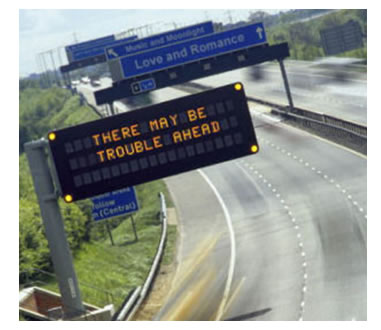
The turnings of history are like the seasons. It is impossible to go directly from Fall to Spring. You must withstand the bitter harshness of winter in order to get to the revitalizing warmth of spring. The intensity and depth of winters will vary. Those who prepare for a potentially harsh Winter in advance will be more likely to survive. The morphology of Fourth Turnings as described by Strauss & Howe is:
- A Crisis era begins with a catalyst - a startling event (or sequence of events) that produces a sudden shift in mood.
- Once catalyzed, a society achieves regeneracy - a new counterentropy that reunifies and reenergizes civic life.
- The regenerated society propels toward a climax - a crucial moment that confirms the death of the old order and birth of the new.
- The climax culminates in a resolution - a triumphant or tragic conclusion that separates the winners from losers, resolves the big public questions, and establishes the new order.
An honest assessment of where we sit in this cycle shows that we are still in stage one. The housing collapse brought about the near destruction of the worldwide financial system. The sudden shift in mood has been borne out by the angry rise of the Tea Party and the startling result from the recent election. Society is on the verge of stage two. There has yet to be the reunification and reenergizing of society. It still feels like things are falling apart. The sun is slowly setting on this stage and a dark brutal Winter night beckons.

1860 Election - Spark that Ignited an Epic Conflagration
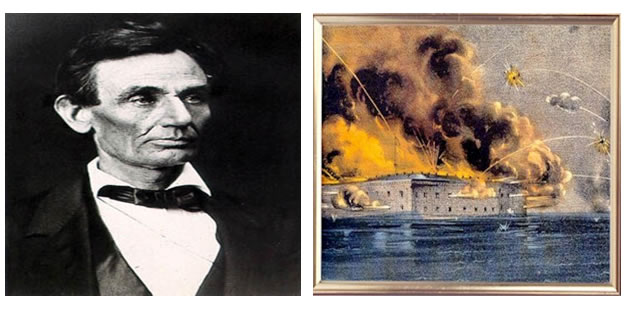
Turnings throughout history have consistently lasted between 15 and 25 years, except one. The Civil War Crisis Turning lasted only 5 years and seems to not fit the standard definition of a Turning. Strauss & Howe reflected that:
"By the usual pattern of history, the Civil War Crisis catalyst occurred four or five years ahead of schedule and its resolution nearly a generation too soon."
The truth is that instead of a drawn out Crisis over 15 to 20 years that would have had undulations of pain and suffering, the U.S. experienced the most savage 5 years in our history, with 620,000 Americans killed and 400,000 wounded. Ten percent of all Northern males 20–45 years of age died; as did 30 percent of all Southern white males aged 18–40. Strauss and Howe conclude that there are two lessons from the Civil War Crisis:
- The Fourth Turning morphology admits to acceleration.
- That acceleration can add to the tragedy of the outcome.
The catalyst for the Crisis was the election of Abraham Lincoln as President of the United States. After the Compromise of 1850, who would have envisioned the election of an unknown Congressman from an abolitionist party that didn't even exist in 1850. Beyond that, could anyone have predicted the carnage from the bloodiest war in the history of mankind being the result of that election? Many people do not know that there were four candidates for President in 1860 and that Lincoln won the election with only 39.8% of the popular vote. Lincoln won the Presidency and he wasn't even on the ballot in Alabama, Arkansas, Florida, Georgia, Louisiana, Mississippi, North Carolina, Tennessee, or Texas.
The Republican Party realized they had a tremendous opportunity to win the Presidency as the Democrats were in disarray. Since it was essential to carry the West, and because Lincoln had a national reputation from his debates and speeches as the most articulate moderate, he won the party's nomination on the third ballot on May 18, 1860. The Republican platform stated that slavery would not be allowed to spread any further, and it also promised that tariffs protecting industry would be imposed, a Homestead Act granting free farmland in the West to settlers, and the funding of a transcontinental railroad. All of these provisions were highly unpopular in the South.
The Democratic Party split into two factions due to the issue of slavery. Stephen A. Douglass became the Northern Democrat candidate. He was a moderate on the slavery issue. John C. Breckinridge was selected by the Fireaters from the Deep South. Breckinridge supported extending slavery into territories whose voters did not want it. A fourth party called the Constitutional Union Party made up of die-hard former Southern Whigs and Know Nothings who felt they could support neither the Democratic Party nor the Republican Party was formed. They nominated John Bell of Tennessee for President. The party platform advocated compromise to save the Union, with the slogan "the Union as it is, and the Constitution as it is."
The voter turnout rate in 1860 was the second-highest on record (81.2%, second only to 1876, with 81.8%). The voter turnout in 2008 of 56.8% was the highest for a Presidential election since 1968.
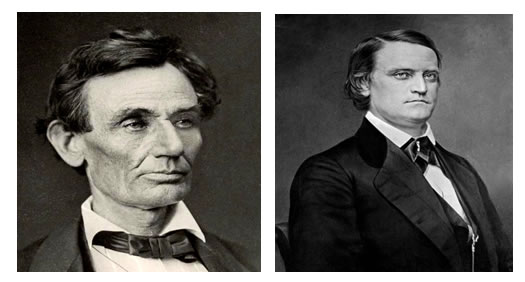
Nominee: Abraham Lincoln Nominee: John C. Breckinridge
Party: Republican Party: Southern Democrat
% of Vote: 39.8% % of Vote: 18.1%
Electoral Votes: 180 Electoral Votes: 72
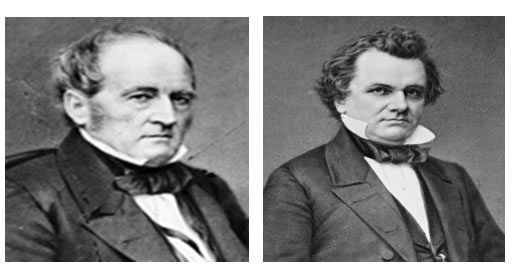
Nominee: John Bell Nominee: Stephen A. Douglass
Party: Constitutional Union Party: Northern Democrat
% of Vote: 12.6% % of Vote: 29.5%
Electoral Votes: 39 Electoral Votes: 12
As the 1850s progressed the firebrands in the North and South became more entrenched in their dogmatic positions. The Transcendental Generation Prophets came to power and compromise was no longer an option. Both Lincoln and Jefferson Davis were from this Prophet generation. Aging Prophets are always the moralistic drivers of Fourth Turnings. Strauss & Howe stress the importance of the Prophet Generation during a Fourth Turning:
A Crisis catalyst occurs shortly after the old Prophet archetype reaches its apex of societal leadership, when its inclinations are least checked by others. A regeneracy comes as the Prophet abandons any idea of deferral or retreat and binds the society to a Crisis course. A climax occurs when the Prophet expends its last burst of passion, just before descending rapidly from power.
The election of Abraham Lincoln proved to be the catalyst for the Crisis. Seven southern states seceded from the Union before Lincoln took office. The attack on Fort Sumter started a spiral of carnage and butchery that could not be reversed. The Crisis reached regeneracy after the Union debacle during the First Battle of Bull Run. Lincoln realized winning this war would require full mobilization and all out war. He ordered the enlistment of 500,000 soldiers, suspension of habeas corpus, taxation, and expansion of government power. The next four years were a swirl of savagery and unprecedented tragedy. It convulsed to a chaotic conclusion with the surrender at Appomattox and assassination of Lincoln in the same week. The Crisis exhausted itself with the climax seeming more like a defeat than a victory.
Are the actions of politicians 150 years ago worth understanding in order to determine how our current Crisis will develop? Since every Crisis period has the exact same generational configuration and generations react to events in similar manner, I believe it is worthwhile to examine the Civil War dynamics. Historian Gordon Leidner's conclusions about the Civil War period are revealing:
- Although the majority of the American people-- including many moderate politicians like Abraham Lincoln--wanted to avoid Civil War and were content to allow slavery to die a slow, inevitable death, the most influential political leaders of the day were not.
- On the southern side, "fire-eaters" like Robert Rhett and William Yancey were willing to make war to guarantee the propagation of their "right" to own slaves.
- On the northern side, abolitionists like John Brown and Henry Ward Beecher of Connecticut were willing to make war in order to put an immediate end to the institution of slavery.
- Southern politicians convinced their majority that the North was threatening their way of life and their culture. Northern politicians convinced their majority that the South, if allowed to secede, was really striking a serious blow at democratic government. In these arguments, both southern and northern politicians were speaking the truth--but not "the whole truth."
- It was also about the constitutional argument over whether or not a state had a right to leave the Union, and--of primary concern to most southern soldiers--the continuation of antebellum southern culture. Although the majority of Southerners had little interest in slaves, slavery was a primary interest of Southern politicians--and consequently the underlying cause of the South's desire to seek independence and state rights.
The insights gained from the Civil War Crisis are that compromise and moderation are discarded. The firebrands control the field. The Prophets push for an all out war to settle the pressing issues of the day. They are willing to sacrifice the young in their moralistic fervor to satisfy their vision of the future. The final verdict will depend on the strength, judgment, and wisdom of the Prophet leaders during a Crisis.
2012 Election - Crisis Leader Sets Stage for Dark Days Ahead
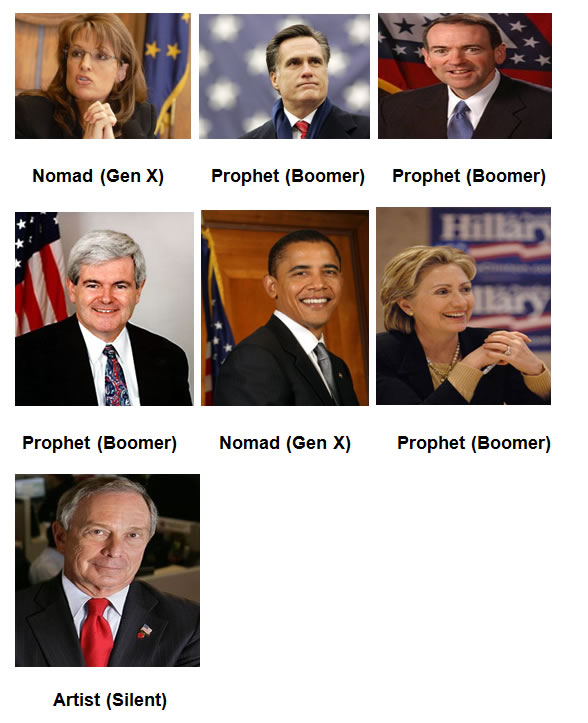
By 2012 we will have reached the 7th year of this Crisis. The linear thinking media and supposed "thought leaders" are convinced that the worst days of this Crisis have passed. They believe that the Federal Reserve and Government leaders have taken the proper actions to avert a Great Depression. They will be shocked when the Crisis deepens and gets far worse than today. Every action taken by our leaders since 2005 has worsened the Crisis. Rather than letting the culprits of the financial crisis fail, they have propped up these criminal institutions with taxpayer funds. By not accepting the pain early in this Crisis, these leaders have ensured that this Crisis will be more tragic, brutal and wrenching. The mood of the country continues to darken, even as the mainstream media and government cheerleaders falsely insist that things are getting better.
By year 7 of the American Revolution Crisis, George Washington was on the verge of defeating the British at Yorktown and bringing that Crisis to a positive conclusion. The Civil War Crisis had concluded with Union victory by year 5. The Great Depression/WWII Crisis was in a lull period, with GDP growing by 13% in 1936 as government spending and personal consumption surged. The economy gave the appearance of recovery because FDR's New Deal programs created make work schemes using government funds. Americans know the 1930s as the Great Depression. As proof of how meaningless GDP calculations are versus how real Americans are affected, the GDP increased by 63% in the four year period between 1934 and 1937. Despite this phenomenal growth, the unemployment rate remained at 17%. In comparison, GDP has advanced by only 5.1% from the bottom in the 2nd quarter of 2009 until today and the unemployment rate on a comparable basis is 23%. Franklin Delano Roosevelt won the 1936 election over Alfred Landon in one of the greatest landslides in history, with 523 electoral votes to Landon's 8.
The current Crisis appears to be in a lull similar to the 1930s. Government actions can mask deeper problems for awhile, but pressure continues to build. The problems did not go away. The bad debts did not disappear. The Wall Street criminals are still free to loot the American middle class. No one has been prosecuted for the greatest financial fraud in history. The National Debt continues to balloon by $4 billion per day. The USD is slowly being replaced as the worldwide reserve currency. Political ideologues have taken control of both parties. Worldwide trade tensions and social contract broken promises are leading to riots and chaos across the Europe. The onset of peak cheap oil is raising prices for fuel and food and setting the stage for coming resource wars. Fundamentalist religious leaders are pushing for a religious war between Christianity and Islam. The extremists are gaining control of the agenda.
The sudden shift in mood has occurred. The hard working middle class of this country are frustrated, angry and feel betrayed by their leaders. The American people are fed up with all politicians. The liberal ideologues and conservative ideologues have staked out immovable positions on social, financial, and foreign trade issues. Compromise is as likely as it was in 1860. The Tea Party will not compromise. Their agenda is to change politics in Washington DC. They will be a thorn in both party’s side. The possibility of the Tea Party becoming a 3rd party is quite possible. This brings us to the 2012 Presidential election. The current configuration of Congress guarantees that absolutely nothing will get done in the next two years. Both parties will ignore the looming disaster of debt, devaluation, and depression as they position themselves for the 2012 election. The Crisis has not yet entered the regeneracy stage. This is the stage where the country unifies behind a leader and deals with the sudden threats that previously have been ignored or deferred, but which are now perceived as dire. The likely threats are the National Debt, a currency collapse, the Christian/Muslim conflict, Peak Oil, the rise of China, or more likely a combination of some of these issues.
Strauss & Howe’s words regarding the approaching Crisis, written in 1997, are eerie and haunting:
"In retrospect, the spark might seem as ominous as a financial crash, as ordinary as a national election, or as trivial as a Tea Party. The catalyst will unfold according to a basic Crisis dynamic that underlies all of these scenarios: An initial spark will trigger a chain reaction of unyielding responses and further emergencies. The core elements of these scenarios (debt, civic decay, global disorder) will matter more than the details, which the catalyst will juxtapose and connect in some unknowable way. If foreign societies are also entering a Fourth Turning, this could accelerate the chain reaction. At home and abroad, these events will reflect the tearing of the civic fabric at points of extreme vulnerability - problem areas where America will have neglected, denied, or delayed needed action."
As I try to assess the next phase of this Crisis, I have been seeking guidance from previous Fourth Turnings. At this juncture, the Crisis seems to have aspects of the Great Depression/World War II and Civil War Fourth Turnings. A financial crisis morphed into recession, much like the 1929 Crash and subsequent recession. Like the Great Depression, government borrowing and spending has given the false hope of recovery. The difference is that the government actions have failed to generate a strong rebound in GDP and unemployment continues to ratchet higher. A landslide election victory by Barack Obama in 2012 is not only impossible; he may not even be the Democratic nominee. The 2012 Presidential election is already destined to be a defining moment in our country's history. The future path, intensity and pain of this Crisis will be greatly impacted by the outcome of this election. The darkening skies of Crisis are likely to become more threatening by 2012.
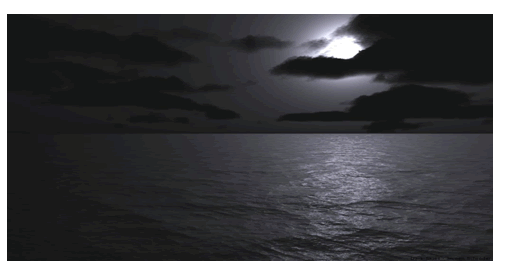
A recent Gallup poll gives an early indication of the likely Republican nominee in 2012. The front runners (Mitt Romney, Sarah Palin) have remained static, while the firebrands (Newt Gingrich, Mike Huckabee) have gained ground. The move towards a moralistic Prophet summoner of human sacrifice is not a surprise. The financial and world events that lead up to the 2012 election will determine which candidate is selected from the Republican field. The firebrands are likely to push to resolve ever-deepening moral choices through military force.
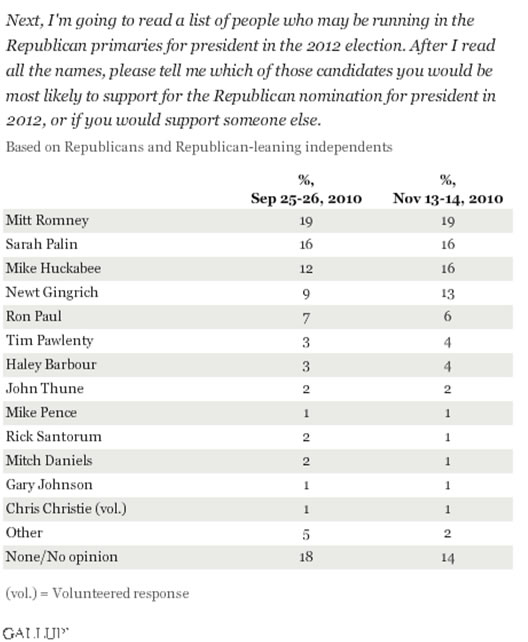
Usually an incumbent President can be sure of re-nomination as the Democratic candidate, but Obama's popularity is so low and his effectiveness as President has been so wanting that a challenge from Hillary Clinton is a distinct possibility. Clinton has the Prophet persona and would command the respect of Americans looking for foreign relations expertise. A failed challenge to Obama's nomination would likely weaken Obama and allow the Republican candidate an easy victory. A potential wildcard would be an insurgent independent campaign by billionaire Michael Bloomberg. His financial background and moderate positions on social issues could attract moderate Republican and Democratic voters. Another possibility is that the Tea Party is unable to assimilate within the Republican Party and decides to nominate its own candidate. This could lead to an 1860 like situation, with four candidates vying for the Presidency. The victor in this scenario might need to be selected by the Electoral College. The next President could be elected with less than 40% of the popular vote. Could this election result lead to secession movement? Will large segments of the population not accept the election verdict?
Will America Survive this Fourth Turning?
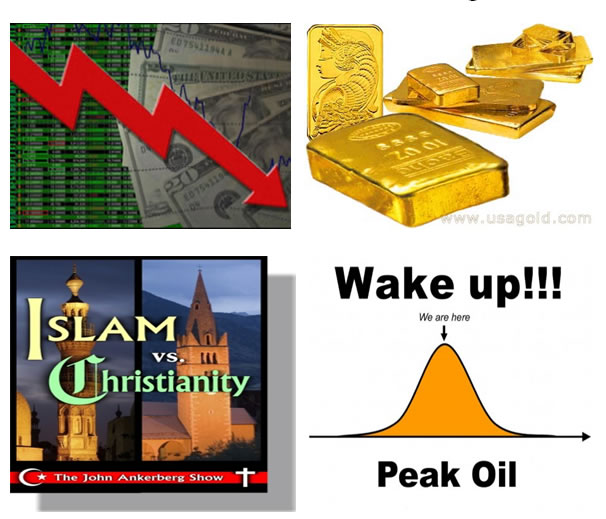
We are poised on the brink of the regeneracy phase of this Fourth Turning. The open question is what incident or events will lead to Americans rallying around a Prophet leader. Regeneracy during the American Revolution occurred in 1776 with the Declaration of Independence. It occurred during the Civil War when Lincoln demanded full mobilization and total war after the Battle of Bull Run. The election of FDR in 1932 produced a regeneracy based upon his New Deal policies. The issues confronting our nation appear intractable. The government "solutions" to the initial phase of this Crisis have been to paper over bad debts, prop up insolvent financial institutions, defer hard entitlement choices, debase the currency in an effort to alleviate overwhelming levels of government debt, ignore the imminent implications of cheap peak oil, and waging never ending lifeblood draining wars on terror. Ben Bernanke, a self described "expert" on the Great Depression, and his Federal Reserve, which has inflated away 96% of the USD purchasing power since 1913, will be the likely culprit in the next phase of this Crisis. Countries around the world are scrambling to reduce their exposure to the USD. Ben Bernanke has proven unable to comprehend the most basic economic signals (housing collapse, derivatives, Wall Street fraud). He will be blindsided by the sudden collapse of the US currency.
It is likely that phase two of this financial Crisis will lead to the election of a dogmatic Republican Prophet Boomer in 2012. This person will take office in January, 2013, eight years into this Fourth Turning. They will be faced with the realization that peak cheap oil is a fact, as even the linearist thinkers realize that technology and green energy will not provide the bumper sticker solution for our oil dependent society. The devastating combination of a currency collapse, oil supply shortages, and the draining war on terror will either unify the country behind the Prophet leader in their effort to save the country or it could result in the country's fabric tearing apart with the Federal government losing control of sections of the country. A World War over dwindling natural resources is easily foreseeable. The actual denouement of events remain a mystery. Much will depend on the leader we choose. Much will depend on the strength, fortitude, and sacrifice of the American people.
Strauss & Howe provide four possible outcomes to our current Crisis:
- This Fourth Turning could mark the end of man. It could be an omnicidal Armageddon, destroying everything, leaving nothing. If mankind ever extinguishes itself, this will probably happen when its dominant civilization triggers a Fourth Turning that ends horribly. For this Fourth Turning to put an end to all this would require an extremely unlikely blend of social disaster, human malevolence, technological perfection and bad luck.
- The Fourth Turning could mark the end of modernity. The Western saecular rythm - which began in the mid-fifteenth century with the Renaissance - could come to an abrupt terminus. The seventh modern saeculum would be the last. This too could come from total war, terrible but not final. There could be a complete collapse of science, culture, politics, and society. Such a dire result would probably happen only when a dominant nation (like today's America) lets a Fourth Turning ekpyrosis engulf the planet. But this outcome is well within the reach of foreseeable technology and malevolence.
- The Fourth Turning could spare modernity but mark the end of our nation. It could close the book on the political constitution, popular culture, and moral standing that the word America has come to signify. The nation has endured for three saecula; Rome lasted twelve, the Soviet Union only one. Fourth Turnings are critical thresholds for national survival. Each of the last three American Crises produced moments of extreme danger: In the Revolution, the very birth of the republic hung by a thread in more than one battle. In the Civil War, the union barely survived a four-year slaughter that in its own time was regarded as the most lethal war in history. In World War II, the nation destroyed an enemy of democracy that for a time was winning; had the enemy won, America might have itself been destroyed. In all likelihood, the next Crisis will present the nation with a threat and a consequence on a similar scale.
- Or the Fourth Turning could simply mark the end of the Millennial Saeculum. Mankind, modernity, and America would all persevere. Afterward, there would be a new mood, a new High, and a new saeculum. America would be reborn. But, reborn, it would not be the same.
The Fourth Turning is not a prophecy of doom. It is not some sort of Nostradamus like prediction of what will happen on a certain date. The Fourth Turning is part of a cycle of history tied to a long human life that has happened before and hopefully will happen again. Our trials await. Will America respond with strength of character, wise choices, and a willingness to sacrifice for future unborn generations? It is time to find out.
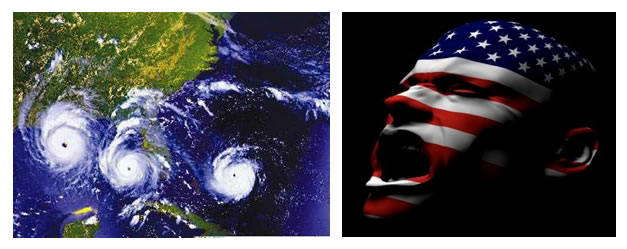
For everything there is a season, and a time for every matter under heaven:
A time to be born, and a time to die;
a time to plant, and a time to pluck up what is planted;
A time to kill, and a time to heal;
a time to break down, and a time to build up;
A time to weep, and a time to laugh;
a time to mourn, and a time to dance;
A time to throw away stones, and a time to gather stones together;
a time to embrace, and a time to refrain from embracing;
A time to seek, and a time to lose;
a time to keep, and a time to throw away;
A time to tear, and a time to sew;
a time to keep silence, and a time to speak;
A time to love, and a time to hate;
a time for war, and a time for peace.
Ecclesiastes 3: 1-8
Join me at www.TheBurningPlatform.com to discuss truth and the future of our country.
By James Quinn
James Quinn is a senior director of strategic planning for a major university. James has held financial positions with a retailer, homebuilder and university in his 22-year career. Those positions included treasurer, controller, and head of strategic planning. He is married with three boys and is writing these articles because he cares about their future. He earned a BS in accounting from Drexel University and an MBA from Villanova University. He is a certified public accountant and a certified cash manager.
These articles reflect the personal views of James Quinn. They do not necessarily represent the views of his employer, and are not sponsored or endorsed by his employer.
© 2010 Copyright James Quinn - All Rights Reserved
Disclaimer: The above is a matter of opinion provided for general information purposes only and is not intended as investment advice. Information and analysis above are derived from sources and utilising methods believed to be reliable, but we cannot accept responsibility for any losses you may incur as a result of this analysis. Individuals should consult with their personal financial advisors.
James Quinn Archive |
© 2005-2022 http://www.MarketOracle.co.uk - The Market Oracle is a FREE Daily Financial Markets Analysis & Forecasting online publication.



